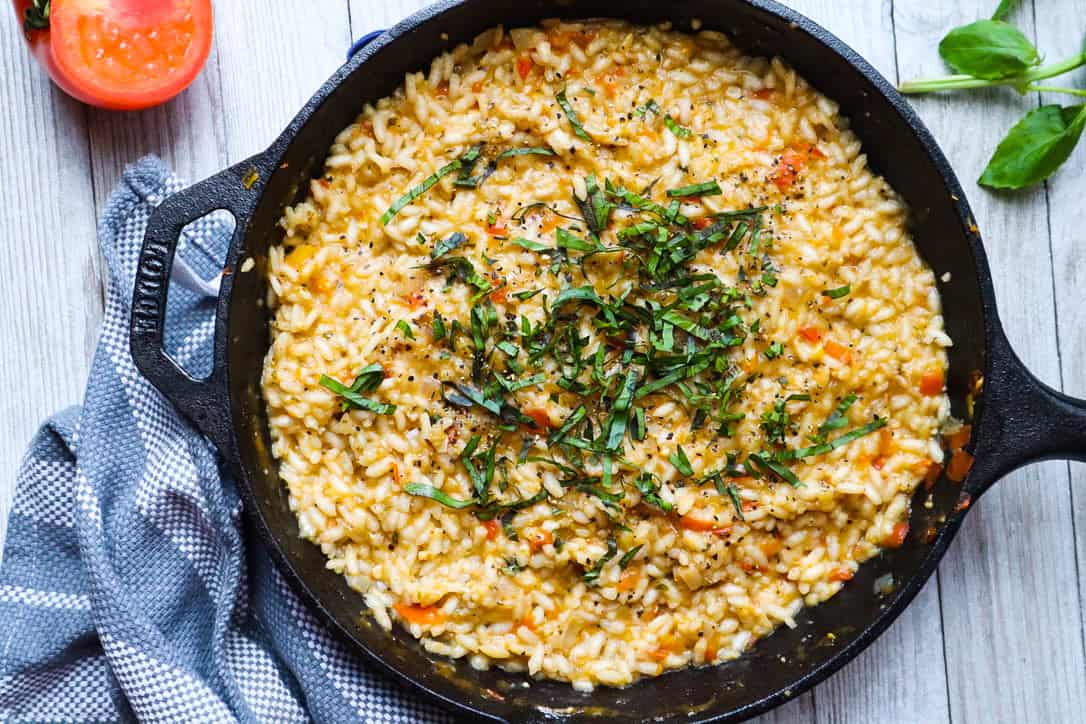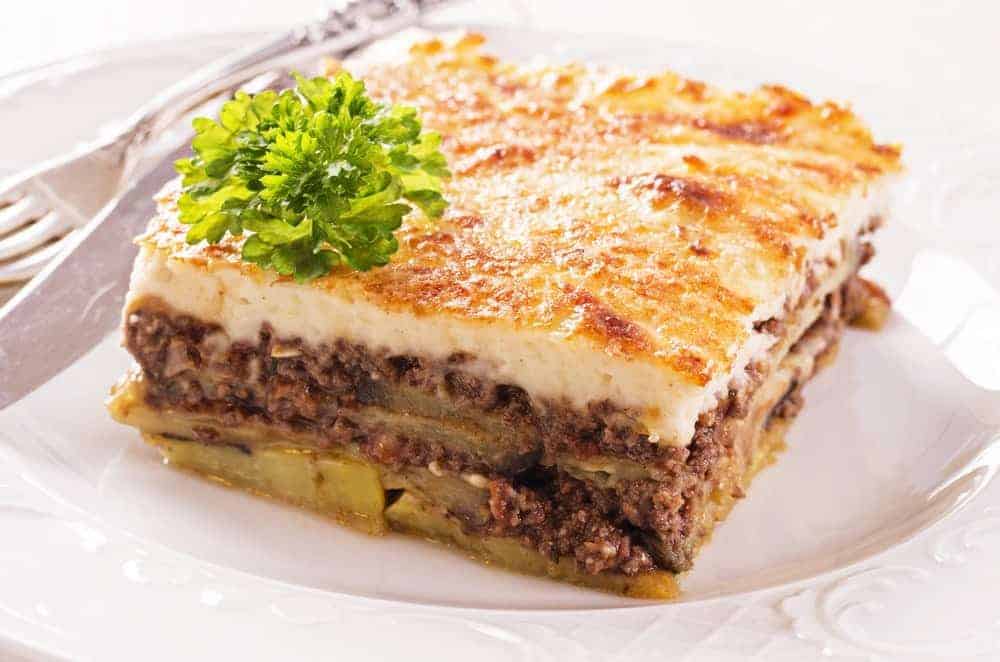If you think risotto is only something you order at fancy restaurants — think again.
Homemade risotto is actually pretty straightforward. Sure, it needs a little attention (okay, a lot of stirring), but the final dish?
Creamy, luxurious, and so satisfying it feels like a warm hug straight from Italy.
Real risotto is about patience, not perfection. And once you get the hang of it, you’ll wonder why you ever thought it was “too complicated.”
What is Risotto Exactly?
At its core, risotto is a creamy rice dish made by slowly cooking special short-grain rice with broth, adding a little at a time until it’s perfectly tender but still a tiny bit firm (“al dente”).
It’s famous in Northern Italy — think Milan, Venice, and beyond — and can be flavored a million ways, from simple Parmesan to seafood, mushrooms, saffron, or seasonal veggies.
Essential Ingredients:
- 1 1/2 cups Arborio rice (or Carnaroli, if you can find it)
- 5 cups chicken broth (or vegetable broth), kept warm
- 1 small onion, finely chopped
- 2 cloves garlic, minced
- 3 tablespoons butter
- 2 tablespoons olive oil
- 1/2 cup dry white wine (Pinot Grigio or Sauvignon Blanc works)
- 3/4 cup grated Parmesan cheese
- Salt and pepper to taste
- Optional garnish: extra butter, fresh herbs, lemon zest
(Trust me, you don’t want to sub in regular long-grain rice here. Arborio is key.)
Step-by-Step: How to Make Real Italian Risotto
1. Warm your broth.
This is important. Keep the broth simmering gently in a separate pot.
Adding cold broth to hot rice? Big no-no — it messes with the cooking process.
2. Sauté onions and garlic.
In a heavy-bottomed pan (like a Dutch oven or wide skillet), melt 2 tablespoons of butter with the olive oil over medium heat.
Add the onions and cook until translucent, about 3–5 minutes. Toss in the garlic and cook another minute.
3. Toast the rice.
Add the Arborio rice straight into the pan with the onions and garlic.
Stir it around for 2–3 minutes until it starts looking a little translucent at the edges.
This step coats each grain with fat and builds flavor.
(Also makes your kitchen smell amazing.)
4. Deglaze with wine.
Pour in the white wine and stir.
Let it bubble away until almost all the liquid evaporates.
The rice will start absorbing all that bright, slightly acidic goodness.
5. The ladle-dance: add broth gradually.
Here’s where patience kicks in.
Add a ladle of warm broth to the rice.
Stir gently and constantly until most of the liquid is absorbed.
Then add another ladle.
Then stir.
Repeat, over and over, for about 18–20 minutes.
(Don’t rush it — it’s almost… meditative.)
6. Taste and check texture.
Start tasting the risotto around the 16-minute mark.
You’re aiming for grains that are tender but still have a tiny bit of bite in the center — not mushy!
7. Finish with butter and Parmesan.
Turn off the heat. Stir in the remaining tablespoon of butter and all the Parmesan cheese.
Season with salt and pepper.
Cover the pot and let it sit for 2–3 minutes before serving.
That final rest is when the risotto gets that ultra-silky, creamy texture you want.
Top Tips for Perfect Risotto:
- Use the right rice. Arborio, Carnaroli, or Vialone Nano. Not Basmati. Not Jasmine.
- Keep stirring. Not vigorously, but gently and constantly — you want to release the rice’s starch naturally.
- Add broth slowly. It’s tempting to dump it all in — don’t! The magic happens slowly.
- Serve immediately. Risotto waits for no one. It’s best fresh off the stove, creamy and glossy.
Variations You Can Try:
- Mushroom Risotto: Sauté mushrooms separately and fold them in toward the end.
- Seafood Risotto: Add shrimp, scallops, or lobster near the final few minutes of cooking.
- Saffron Risotto (Risotto alla Milanese): Stir in a pinch of saffron threads soaked in a tablespoon of broth.
- Lemon Herb Risotto: Add fresh lemon zest and a handful of chopped herbs like parsley or thyme.
You can seriously build a hundred different risotto recipes once you master this basic version.
FAQs About Risotto:
Q1: Why is my risotto gluey?
You might be stirring too aggressively or adding broth too quickly.
Gentle, slow cooking is key.
Q2: Can I make risotto ahead of time?
Kind of.
You can par-cook it 75% of the way, cool it, and then finish it right before serving. But fresh is always better.
Q3: Is risotto gluten-free?
Yes — pure risotto made with Arborio rice and natural broth is gluten-free. Just double-check the broth you’re using.
Q4: Can I skip the wine?
Sure, but it adds great depth. If you skip it, maybe add a squeeze of lemon juice at the end.
Rough Nutritional Breakdown (per serving — estimate):
- Calories: ~400
- Carbs: ~50g
- Protein: ~12g
- Fat: ~16g
- Fiber: ~2g
(It’s rich, yes, but not insane — and the satisfaction factor is off the charts.)
Final Thoughts:
Risotto might sound fancy, but it’s really about slowing down, enjoying the cooking, and letting a few humble ingredients turn into something almost magical.
Get yourself a good bottle of wine, some fresh Parmesan, and take 30 minutes out of your day to stir up something delicious.
You’ll impress yourself — and whoever you’re feeding.








